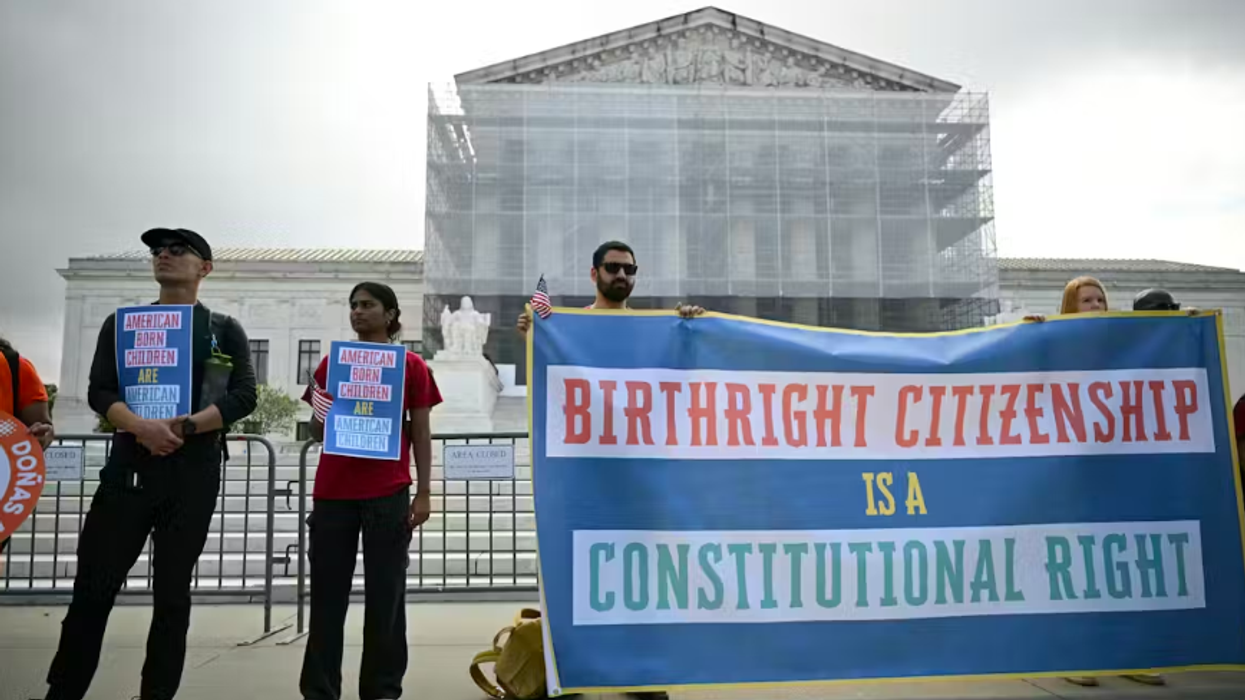The Fulcrum introduces Congress Bill Spotlight, a weekly report by Jesse Rifkin, focusing on the noteworthy legislation of the thousands introduced in Congress. Rifkin has written about Congress for years, and now he's dissecting the most interesting bills you need to know about but that often don't get the right news coverage.
Is 12 years too long to serve in the White House?
The constitutional amendment
A new constitutional amendment proposal would allow a president to be elected to three terms, but only if their first two terms were non-consecutive.
In other words, Donald Trump would be allowed to run for a third term in 2028 – but not the other living consecutive two-term former presidents Barack Obama, Bill Clinton, and George W. Bush.
The House joint resolution was introduced on January 23 by Rep. Andy Ogles (R-TN5).
Context: Trump
While running for his second term in 2024, Donald Trump repeatedly suggested that he could later run for a third, though always with a tongue-in-cheek tone. In a Texas speech, he added the phrase “I don’t know,” while in a Nevada speech, he added that the proposal was a “headline for the fake news.”
Indeed, when asked seriously about the possibility, Trump brushed off his prior comments as a joke. “Somebody's looking to terminate [the 22nd Amendment]... not for me. I wouldn't be in favor of it at all,” Trump told Eric Cortellessa of Time Magazine. “I intend to serve four [more] years and do a great job.”
Indeed, Trump’s son, Donald Jr. said in a speech: “We are getting four more years of Trump and then eight years of J.D. Vance!" – implying that the existing two-term limit would remain.
Context: History
The first president, George Washington, voluntarily stepped down after two terms, or eight years total – even though he likely would have won the election for a third term. For 140 years after that, no president was ever elected to a third term.
That didn’t stop a few from trying, though. While most voluntarily stepped down after either one or two terms, honoring Washington’s original precedent, a third term wasn’t actually banned. Indeed, a few two-term presidents ran for a third term but lost, including Ulysses Grant in 1880 and Theodore Roosevelt in 1912.
That changed after President Franklin D. Roosevelt was elected to not just an unprecedented third term in 1940, but an unprecedented fourth term in 1944. (He died in 1945, only a few months into that fourth term.) In response, the Constitution’s 22nd Amendment was ratified in 1951, allowing a president only to be elected twice.
What supporters say
The new proposal’s lead sponsor argues it not on general principles, but Trump-specific ones – even though, if ratified, it would apply to every president for the rest of time.
Trump “has proven himself to be the only figure in modern history capable of reversing our nation’s decay and restoring America to greatness, and he must be given the time necessary to accomplish that goal,” Rep. Ogles said in a press release. “This amendment would allow President Trump to serve three terms, ensuring that we can sustain the bold leadership our nation so desperately needs.”
What opponents say
Opponents counter that the two-term limit makes some sense – and that includes some former two-term presidents themselves.
“On balance, the arguments for executive term limits are pretty compelling,” Clinton said In a 2000 Rolling Stone interview with Jann Wenner, admitting he’d have run for a third term if he could and predicting he’d have won. “I mean, I have an extra amount of energy and I love this job; I love the nature of this work. But maybe it’s better to leave when you’re in good.”
Or as Obama put it in his comedic interview with The Hangover actor Zach Galifianakis on Between Two Ferns: “Actually, I think it’s a good idea. If I ran a third time, it’d be sort of like doing a third Hangover movie. It didn’t really work out very well, did it?”
At least in theory, many Democrats could get behind this constitutional amendment, too.
Of the last three presidents to serve two full terms, the two Democrats – Obama and Clinton – ended with positive job approval, implying that they may have won a hypothetical third term. The Republican, Bush, ended with strongly negative job approval instead. On paper, that could seemingly imply more Democratic than Republican support.
Indeed, liberal opinion columnist Matt Yglesias advocated abolishing presidential term limits for Vox in 2016, with the headline: “Democrats’ best choice for 2016 is the guy already in the White House.”
However, Democratic cosponsorship seems unlikely at the moment, considering Rep. Ogles posted a link to a Fox News article about his proposal on X (formerly known as Twitter) with the caption “TRUMP 2028” in all caps alongside an American flag emoji.
Odds of passage
The legislation has not yet attracted any cosponsors, not even any Republicans.
It now awaits a potential vote in the House Judiciary Committee, controlled by Republicans. No Senate companion version appears to have been introduced yet.
Unlike a “regular” bill, though, constitutional amendments must pass with two-thirds of both congressional chambers. While Republicans currently hold slight majorities in both, they fall well short of two-thirds in both the House and Senate.
Even if it passed both chambers, it would still have to be ratified by three-quarters of state legislatures, or 38 of the 50. But Trump “only” won 31 states. So that means at least seven more states that voted for Kamala Harris would have to sign on.
And that’s assuming all of those 31 state legislatures voted to ratify the amendment in the first place. Four states voted for Trump, yet don’t have full Republican legislature control: Alaska, Michigan, Nevada, and Pennsylvania.
Jesse Rifkin is a freelance journalist with the Fulcrum. Don’t miss his weekly report, Congress Bill Spotlight, every Friday on the Fulcrum. Rifkin’s writings about politics and Congress have been published in the Washington Post, Politico, Roll Call, Los Angeles Times, CNN Opinion, GovTrack, and USA Today.




















